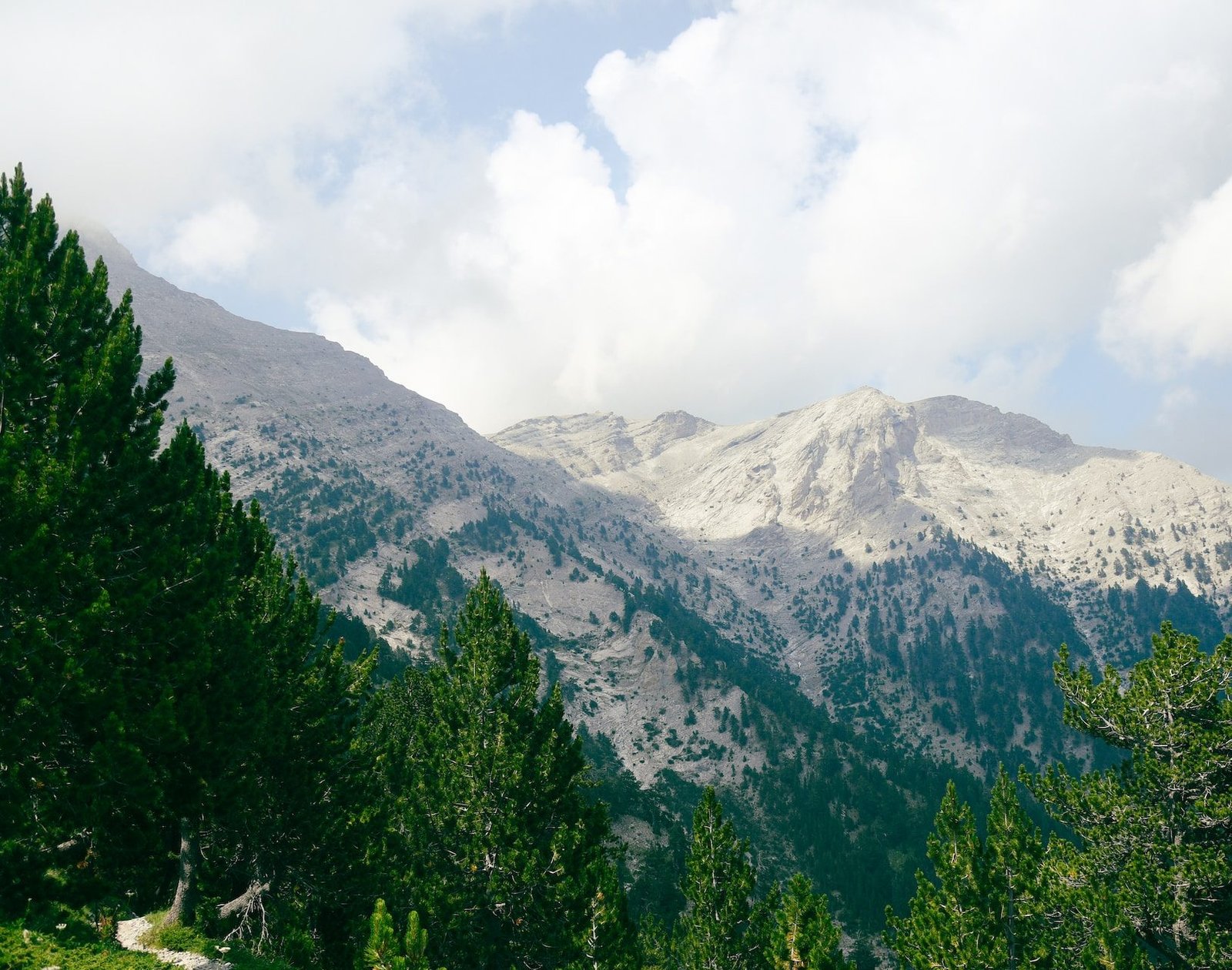Mount Olympus stands as the highest mountain in Greece. It reaches 2,917 meters (9,570 feet) and lies between the regions of Thessaly and Macedonia. Located about 80 kilometers southwest of Thessaloniki, the mountain sits close to the Aegean Sea. Ancient Greeks believed that the twelve Olympian gods lived on its peaks. Today, people visit Olympus for its natural beauty, cultural importance, and outdoor adventures.
In 1938, Greece created Olympus National Park to protect the mountain’s unique environment. Later, UNESCO recognized the park as a World Biosphere Reserve. This recognition highlights the mountain’s rich biodiversity and ecological value. The park contains over 1,700 plant species, including many that grow only in this area.
Travelers often begin their journey in the town of Litochoro. This town lies at the base of the mountain and offers easy access to hiking trails and visitor information. From Litochoro, hikers can follow marked paths through forests, streams, and rocky terrain. Most trails lead to mountain refuges such as Spilios Agapitos, which provide basic meals and lodging. These shelters help hikers rest and adjust before attempting higher climbs.
Although Olympus offers trails for all skill levels, reaching the summit of Mytikas requires experience and proper gear. Mytikas, the highest peak, involves some scrambling and light climbing. Stefani and Skolio, the second and third highest peaks, also attract skilled hikers. Because weather can change quickly, especially near the top, visitors should check forecasts and carry appropriate equipment. Local guides can improve safety and provide helpful advice.
Besides climbing, Olympus offers many other attractions. The Enipeas Gorge near Litochoro features waterfalls, wooden bridges, and stunning views. Hikers often enjoy this scenic route as a warm-up or shorter walk. Nearby, the ancient city of Dion gives visitors a chance to explore Greek ruins and learn about local history.
The best time to visit Mount Olympus is from late May to early October. During these months, the weather stays mild, and most trails remain open. In contrast, winter brings snow and icy paths, making hikes more dangerous.
In conclusion, Mount Olympus offers a mix of nature, adventure, and myth. With good preparation and respect for the mountain, visitors can enjoy an unforgettable journey through one of Greece’s most iconic landscapes.



Comment (0)